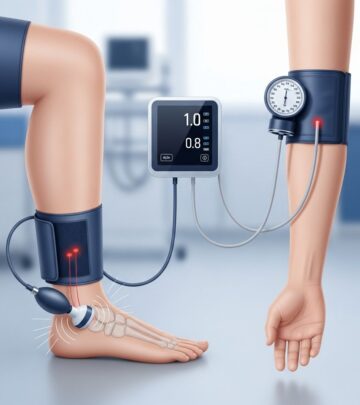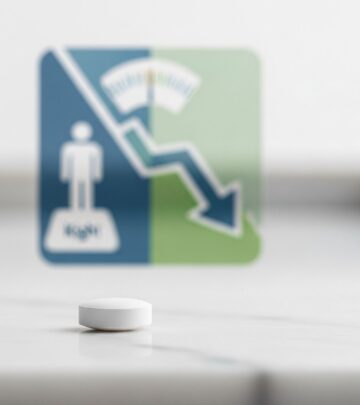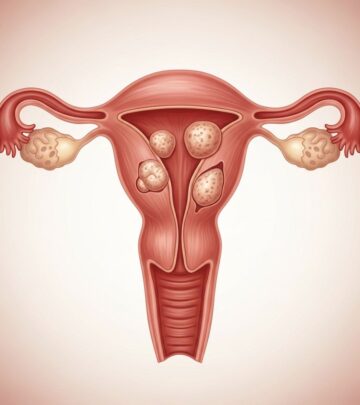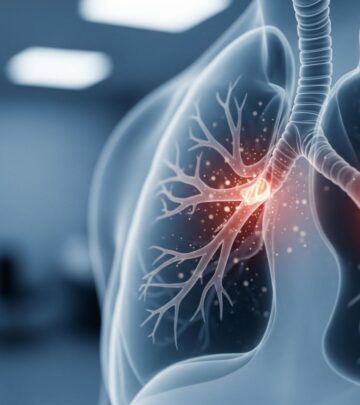High Cholesterol: Diagnosis, Treatment, and Lifestyle Management
Understand high cholesterol: from diagnostic procedures to effective treatment options and essential lifestyle changes for heart health.

High cholesterol is a significant risk factor for cardiovascular diseases, including heart attacks and strokes. Managing cholesterol is crucial not only for those diagnosed with high levels but also for overall preventive health. The latest medical guidance emphasizes a combination of accurate diagnosis, appropriate medical treatments, and sustainable lifestyle changes tailored to each individual.
Diagnosis of High Cholesterol
Cholesterol is a waxy, fat-like substance found in all cells of the body. High levels typically develop over time due to genetics and lifestyle factors and rarely cause symptoms until a serious event occurs. Because of this, routine cholesterol screening is recommended for adults and children at specific intervals.
Cholesterol Testing
The most common method to diagnose high cholesterol is through a blood test called a lipid panel or lipid profile. This test measures:
- Total cholesterol: The sum of all cholesterol in the blood.
- Low-density lipoprotein (LDL) cholesterol: Known as “bad” cholesterol, high LDL leads to plaque buildup in the arteries, restricting or blocking blood flow.
- High-density lipoprotein (HDL) cholesterol: The “good” cholesterol, which helps remove LDL from the bloodstream.
- Triglycerides: A type of blood fat stored for energy. Elevated triglycerides often accompany high LDL or low HDL and can increase cardiovascular risk.
Because cholesterol can fluctuate, you may need to fast for 9–12 hours before the test. However, non-fasting options are available for some patients. Talk with your healthcare professional regarding fasting requirements based on your personal risk factors and current medications.
Cholesterol levels are commonly measured in milligrams per deciliter (mg/dL) in the United States and in millimoles per liter (mmol/L) elsewhere.
When to Test
- For most adults, cholesterol screening is recommended every 4–6 years, starting at age 20.
- Children should generally have one cholesterol screening test between ages 9 and 11, repeated every five years. Earlier or more frequent testing may be suggested if there is a strong family history of heart disease, obesity, or diabetes.
Interpreting Cholesterol Levels
Your healthcare provider will interpret your results using accepted guidelines. General recommendations are:
- LDL cholesterol: < 100 mg/dL (2.6 mmol/L) is optimal.
- HDL cholesterol: ≥ 60 mg/dL (1.6 mmol/L) is considered protective against heart disease.
- Total cholesterol: < 200 mg/dL (5.2 mmol/L) is desirable.
- Triglycerides: < 150 mg/dL (1.7 mmol/L) is normal.
Your personal goals may differ based on other risk factors.
Treatment for High Cholesterol
Treatment for high cholesterol is personalized. Your healthcare professional considers your test results, risk factors, age, overall health, and potential side effects when recommending a plan. The principal goals are to achieve target cholesterol and triglyceride levels, reducing the risk of heart attacks and strokes.
Lifestyle Modifications
In most cases, the first approach to reducing high cholesterol involves making healthy lifestyle changes. These are essential both as initial therapy and as an adjunct to medications.
- Eat a heart-healthy diet: Focus on fruits, vegetables, whole grains, nuts, and lean proteins. Reduce saturated fats (found in red meat and full-fat dairy), remove trans fats (often in processed foods), and limit dietary cholesterol.
- Increase physical activity: Aim for at least 30–40 minutes of moderate to vigorous exercise most days of the week.
- Maintain a healthy weight: Losing excess weight can help lower cholesterol and improve overall cardiovascular health.
- Quit smoking: This can improve HDL levels and reduce the risk of heart disease.
- Limit alcohol consumption: Too much alcohol can increase cholesterol and triglyceride levels.
These lifestyle changes benefit heart health and may help you avoid the need for medications or allow you to take fewer medications at lower dosages.
Medications for High Cholesterol
If lifestyle changes alone are not enough, your provider may prescribe medications. The choice of medicine or combination depends on your individual needs and risk profile.
Common Cholesterol-Lowering Medications
- Statins: These drugs block the liver enzyme responsible for making cholesterol, causing the liver to remove cholesterol from the blood. Common statins include atorvastatin, fluvastatin, lovastatin, pitavastatin, pravastatin, rosuvastatin, and simvastatin.
- Cholesterol absorption inhibitors: Ezetimibe (Zetia) reduces the absorption of cholesterol from food in the intestine and is often prescribed in combination with a statin.
- Bile acid sequestrants: Medicines including cholestyramine, colesevelam, and colestipol bind bile acids in your digestive system, forcing your body to use more cholesterol to make more bile acids, thereby lowering blood cholesterol.
- PCSK9 inhibitors: Alirocumab and evolocumab are injectable medications that help the liver absorb more LDL from the blood, effective for some people who cannot tolerate statins or have genetic conditions like familial hypercholesterolemia.
- Bempedoic acid: Newer oral medication that also helps reduce LDL cholesterol, usually in people who cannot tolerate statins or need additional lowering.
- Other options: Fibrates, niacin, and omega-3 fatty acid supplements may be used in select cases, particularly when triglycerides are also elevated.
| Medication Class | Primary Effect | Common Examples |
|---|---|---|
| Statins | Lower LDL, slight increase HDL, lower triglycerides | Atorvastatin, Simvastatin, Rosuvastatin |
| Cholesterol absorption inhibitors | Lower LDL | Ezetimibe (Zetia) |
| Bile acid sequestrants | Lower LDL | Cholestyramine, Colesevelam |
| PCSK9 inhibitors | Lower LDL | Alirocumab, Evolocumab |
| Bempedoic acid | Lower LDL | Nexletol |
| Fibrates | Lower triglycerides, modest effect on LDL/HDL | Fenofibrate, Gemfibrozil |
| Niacin | Increase HDL, lower triglycerides | Niaspan |
| Omega-3 fatty acids | Lower triglycerides | Prescription fish oil |
Targeting Triglycerides
If your triglycerides are elevated, your healthcare team may recommend fibrates, high-dose omega-3 fatty acids, or niacin, in addition to or instead of other therapies. Elevated triglycerides are also managed with the core lifestyle changes listed above.
Tailoring Treatment to Specific Needs
- Children with high cholesterol: Diet and exercise are the preferred initial treatment for children over two years. Medication may be considered if lifestyle measures fail to reduce cholesterol after age ten, especially if the child has additional risk factors.
- Familial hypercholesterolemia: Those with genetic cholesterol disorders usually require a combination of medications and, in rare cases, advanced treatments like apheresis (blood filtering) or liver transplantation.
- Patients with statin intolerance: Alternatives such as PCSK9 inhibitors, bempedoic acid, or combination therapy may be suggested.
Monitoring and Follow-Up
Regular testing helps ensure treatments are effective and safe. Your healthcare provider will monitor your cholesterol and triglyceride levels, assess response to medication, and check for side effects or drug interactions. You may need more frequent tests when medications are initiated or changed.
Lifestyle and Home Remedies
In addition to medical treatment, long-term success in lowering cholesterol depends on establishing and maintaining heart-healthy habits. Focus on sustainable lifestyle changes for lifelong benefit.
- Eat a balanced, low-salt diet: Emphasize unprocessed foods, whole grains, and plant-based fats.
- Reduce consumption of animal fats: Choose lean meats or plant-based proteins, and avoid processed meats.
- Include healthy fats: Moderately use olive oil, canola oil, and nuts.
- Increase dietary fiber: Whole grains, fruits, and vegetables lower cholesterol absorption.
Persistent effort is important. If you relax these home remedies, cholesterol levels can increase again over time. Work closely with your healthcare team to stay motivated and on track.
Alternative and Complementary Approaches
Some people explore non-prescription products to help lower cholesterol. Always discuss these with your provider, as some supplements or “natural” products can interact with medications or exacerbate health conditions.
Frequently Asked Questions (FAQs)
Q: Can high cholesterol be entirely managed by lifestyle changes alone?
A: For some individuals, especially with mild to moderate elevation and no other risk factors, sustained diet and exercise changes can lower cholesterol levels to a healthy range. However, many people—especially those with a genetic predisposition or multiple risk factors—will still require medication even with optimal lifestyle modifications.
Q: Are there any symptoms of high cholesterol?
A: High cholesterol itself typically causes no symptoms until it leads to significant artery blockage or an event such as a heart attack or stroke. Routine screening is vital since you cannot rely on symptoms to detect the condition early.
Q: What foods should I avoid to lower my LDL cholesterol?
A: Limit foods high in saturated fats (red meat, full-fat dairy, processed foods), trans fats (baked goods, margarine, packaged snacks), and foods with added sugars. Focus on fruits, vegetables, lean proteins, whole grains, and healthy fats for optimal cholesterol management.
Q: How often should I have my cholesterol checked if I’m on medication?
A: Monitoring frequency varies but is generally every 3 to 12 months when starting or changing medications, and annually once stable. Your healthcare provider may adjust this schedule based on risk factors and treatment response.
Q: Can children develop high cholesterol?
A: Yes. Children—especially those with family history of early heart disease, obesity, or diabetes—can have or develop high cholesterol and should be screened as recommended by their healthcare provider. Early intervention with diet, exercise, and in some cases medication, is important for lifelong health.
Takeaway
Cholesterol management is a cornerstone of preventive heart health. Early diagnosis, individualized treatment, and committed lifestyle change—supported by regular follow-up—are key strategies for reducing risk and preserving lifelong well-being. Consult your healthcare professional for guidance tailored to your unique health needs, and employ a proactive approach for the best results in cholesterol control.
Read full bio of Sneha Tete












